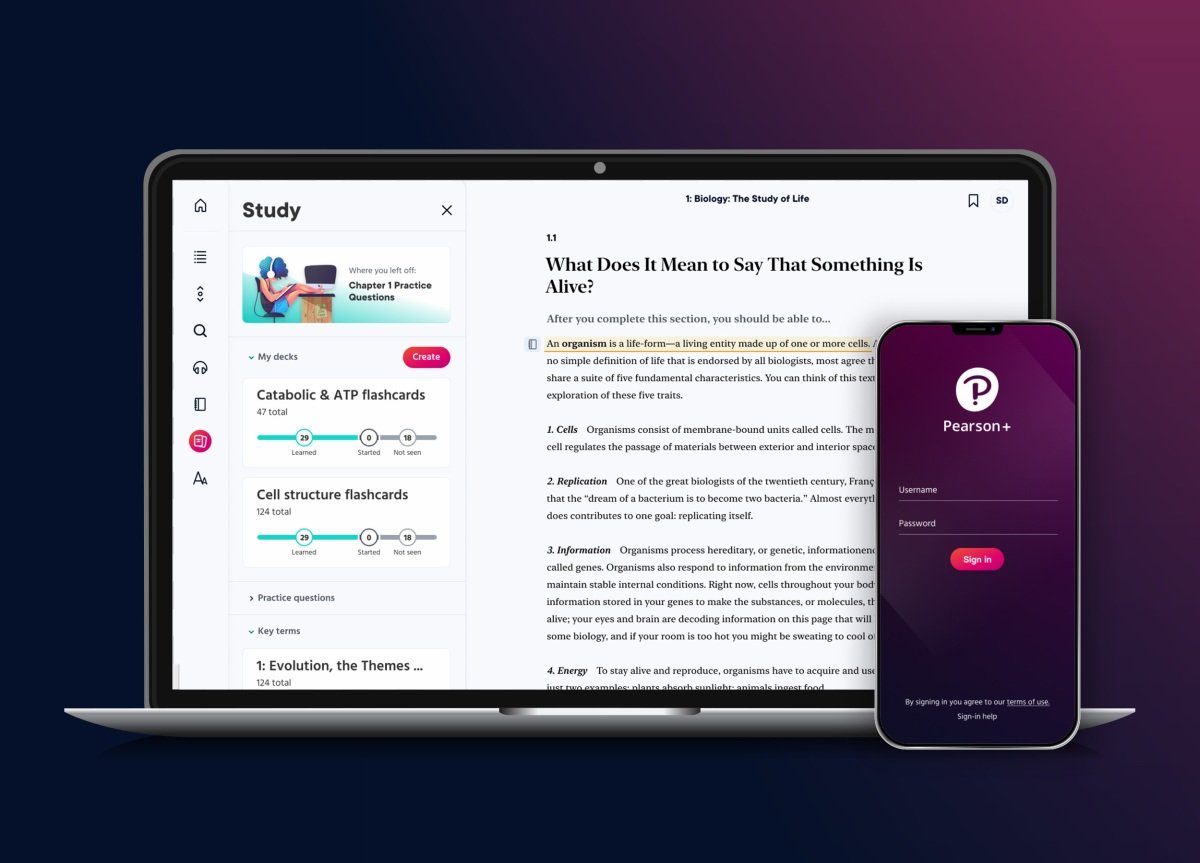Project Challenges
Pearson has mountains of student insights and data to pull from but our #1 problem to tackle was easily the cost of reliable, accessible, and modernized educational material. Besides this top student complaint, we also needed to consider and elevate all content formats within Pearson's extensive library, from PDF to HTML formats, to a consumer-grade experience. Working with our dev teams, existing tech debt needed to be considered in planning and execution whilst keeping an innovative mindset. With innovation in digital learning experience also comes unfamiliarity with these digital UX patterns. We worked tirelessly to test and evaluate the interfaces for maximum understandability and reduction of cognitive load in the digital learning environment.
Pearson+ Study Drawer: Web; Pearson+ Login Screen: Mobile
Process
• Evaluate existing data and insights to understand student goals and needs
• Define business viability and desirability.
• Deep dive on the competitive landscape
• Engage stakeholders at all levels in the design process
• Document key flows and develop wireframes
• Weekly student focus groups and user testing
• Prototype and deliver scalable and consistent design artifacts
• QA
• Iteration and rediscovery
• Post launch: Evaluate opportunities for growth
Key use cases: Web flows: Figma
Wireframes: Medium fidelity: Mobile: Figma
Outcomes
After an entire year of iterating, testing, and iterating again, it is difficult to know when to call a design ‘done’. The lesson I learned is that something this elaborate living out in the wild will eventually reveal design opportunities in the form of reviews and complaints. Upon launch, we immediately listened to students and implemented changes rapidly to fix bugs and expand feature options. We turned 1-star reviews to 5-star reviews by forging relationships with students and acting on their feedback. This allowed them to see improvements practically in real time and feel seen.
Pearson+ App Store review





